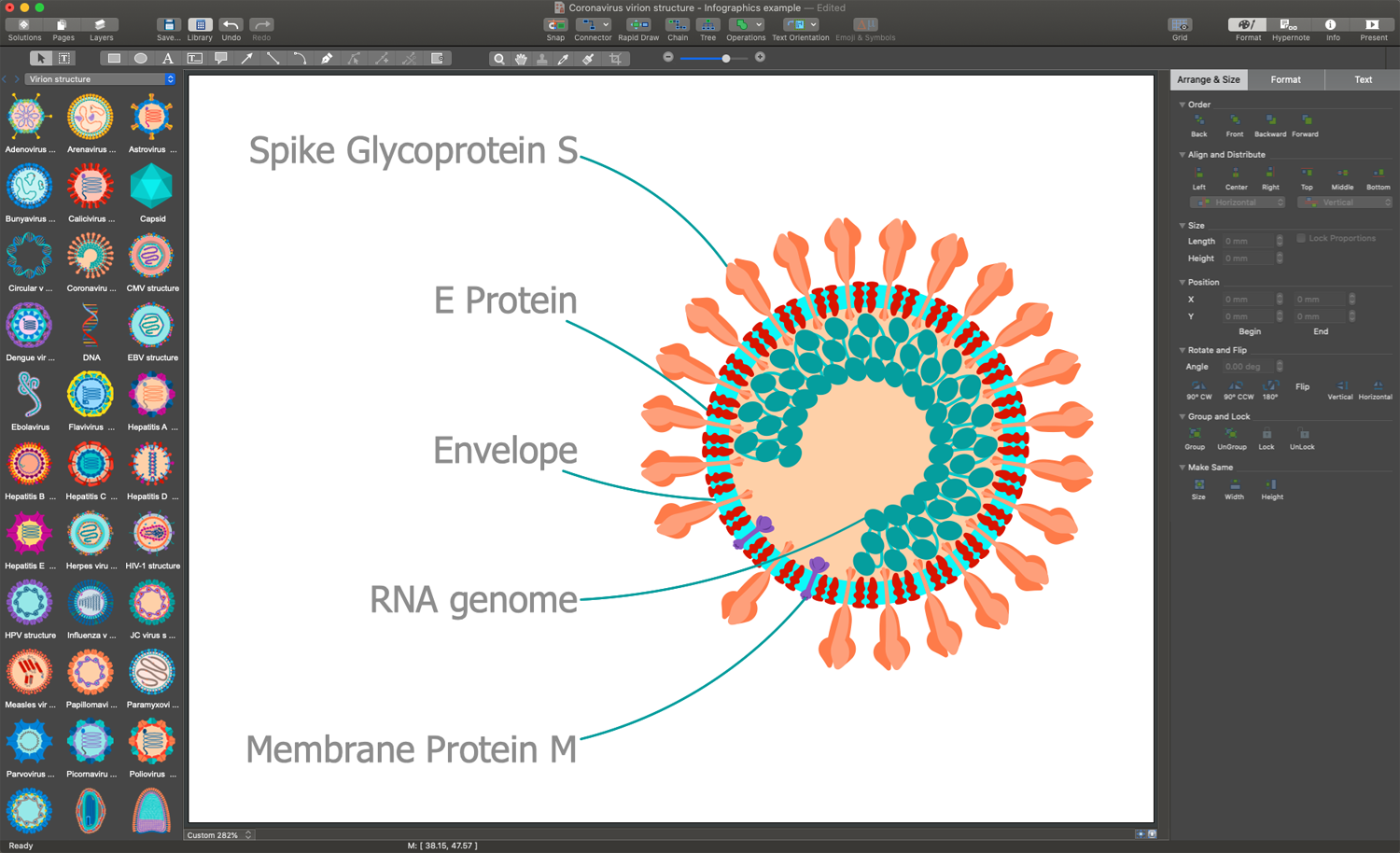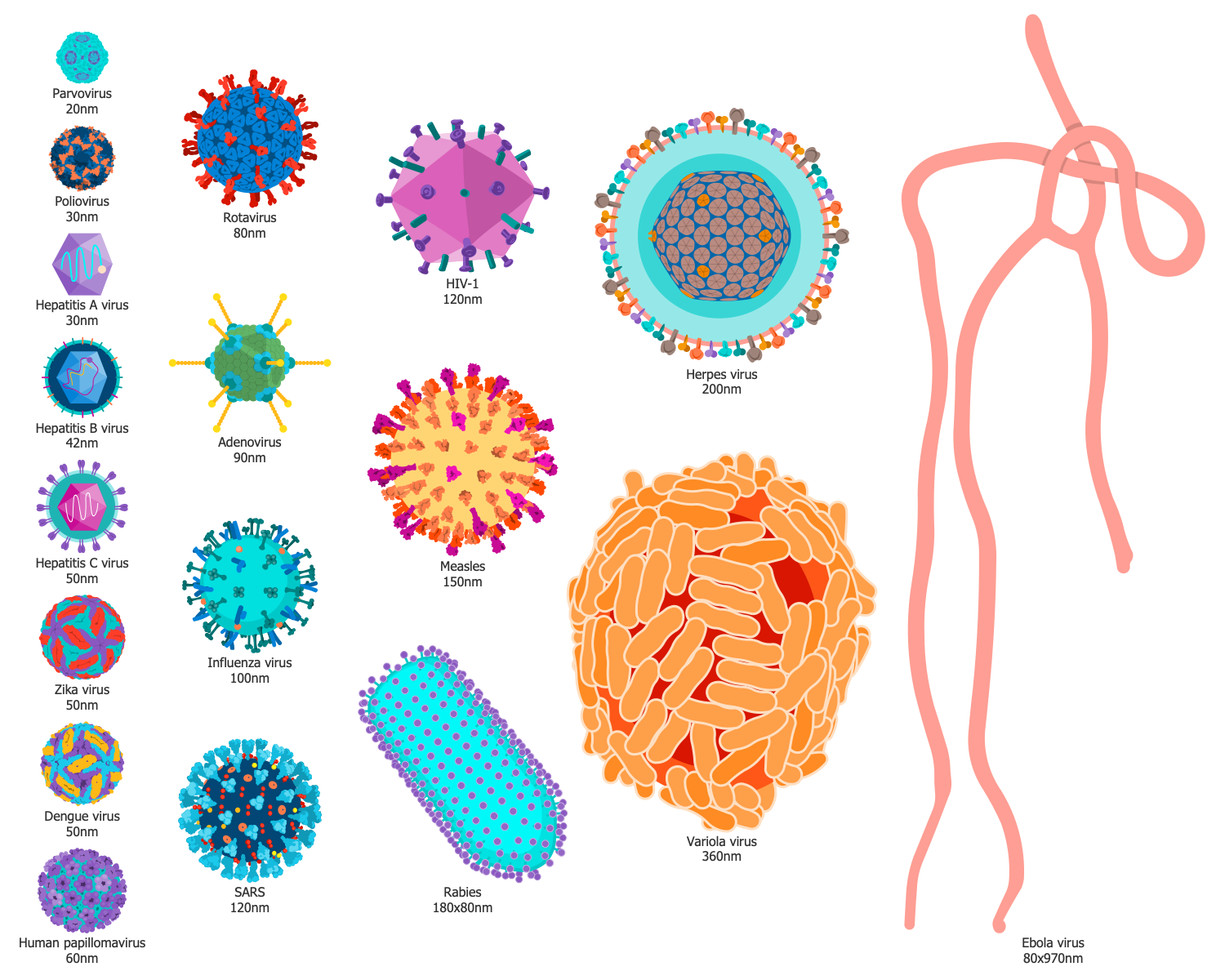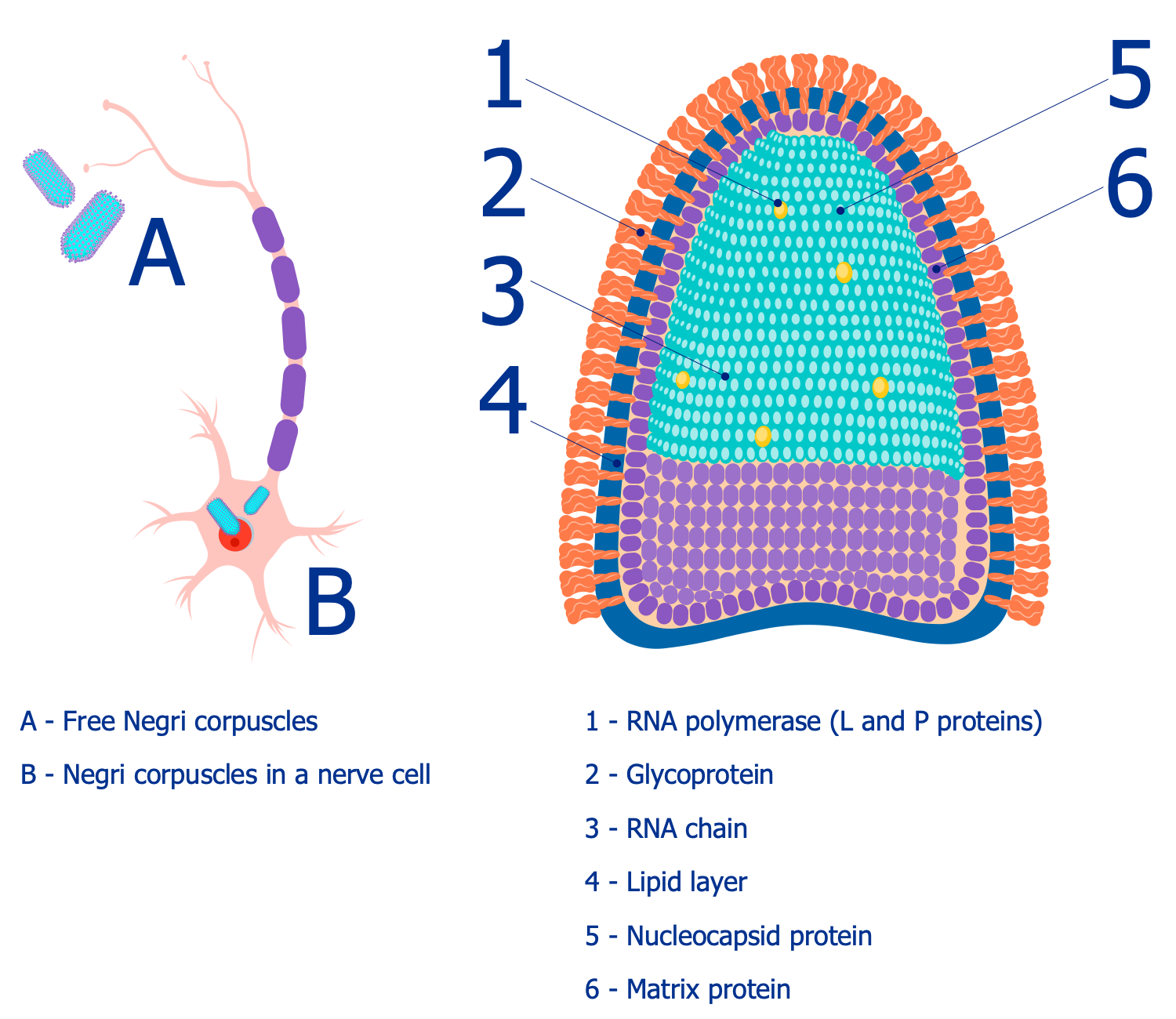Viruses
Viruses are microscopic infectious organisms, the smallest of all microbes, but the most abundant biological entity on Earth. They exist almost everywhere on our planet and their main goal is to multiple. They strive to make more and more their own copies. Viruses possess the unique capability to attach to the cells of other living organisms, get inside them and multiply there. The cells they enter are called host cells.
Viruses have a simple structure. The infectious virus particle is called a virion. It includes a core of genetic material (DNA or RNA) and a protective coat surrounded it. This coat is called a nucleocapsid and is made up of a protein (capsid). Sometimes, a nucleocapsid is surrounded by a lipid envelope consisting of the glycoprotein spikes haemagglutinin (H) and neuraminidase (N). This additional coat is called an envelope. The sizes and shapes of viruses also differ, there are helical, icosahedral shapes, and their combinations.
Viruses cannot multiply by themselves, only in living cells of people, animals, plants, fungi, and even bacteria. That's why they are classified as parasitic. At this, viruses use the host cell’s machinery to replicate their genetic material. Once replication (multiplication) has been completed the new virus particles leave the host cells. They are bursting out into the extracellular space or budded of the host cells.
When the viruses are burst out, the host cell deaths. At the same time, just escaped the new virus is already ready to enter a new cell and multiply there. As for the budding mechanism, viral particles push the host cell’s plasma membrane, their parts are adhered to it and the plasma membrane envelops these viruses. Now, they are released from the cells, but the host’s cell membrane is thinning and cells gradually death.
Many diseases are caused by viruses: SARS, flu, COVID-19, hepatitis, measles, chickenpox, mumps, rubella, smallpox, shingles, herpes, cold sores, polio, rabies, dengue fever, Zika, Epstein-Barr, Ebola, Hanta fever, HPV, HIV, and many more.
As for the origin of viruses, there are three theories:
- Viruses evolved from complex molecules of nucleic acid and proteins billions of years ago when the first cells appeared on Earth.
- Viruses evolved from sections of DNA or RNA from the genes of larger organisms.
- Viruses appeared as independent parasitic organisms. Over time, they lost genes allowing them to parasitize and became dependent on the host cells.
Viruses can spread from mother to child prenatally, from person to person, sometimes from animal to person. They are spread through touch and direct contact, kiss, coughing, sneezing, or sexual contact. Viruses are transmitted by insects, with contaminated food or water. They can live on things for some time and things may contribute spreading of viruses. If a sick person touched a thing, the next person can pick up a virus by touching the same one.

Example 1. Viruses in Infographics and Illustrations
There are some viruses causing no noticeable reactions being entered a living organism. However, there are ones causing serious consequences and even fatal. Besides, viruses are highly selective. Typically, they affect only one type of organism or affect differently varied organisms. A virus affecting animals commonly doesn't affect a human and vice versa, but there are exceptions. A virus affecting a cat may not affect a dog and vice versa, etc.
One more unique and dangerous capability of viruses is their ability to change or mutate. When a virus spreads, it can pick up some pieces of DNA of its host. Being entered into another organism, the virus takes these pieces to it. When entering the host’s DNA, viruses can affect a genome, move around a chromosome or to a new chromosome. This can cause serious and long-term effects in a person's organism like muscular dystrophy or hemophilia. More serious mutations also happen. A dangerous virus can appear if a virus normally affecting animals or birds suddenly enters a human body and picks up a piece of human DNA.
Example 2. Medical Virology Infographic - Virus Size
The graphical representation is the best way to depict important information and data in any field, and health and medicine aren't exceptions. Having the ConceptDraw DIAGRAM charting and drawing software and Medical Virology solution you can design the great-looking Medical Virology infographics and drawings in a few minutes. Create illustrations about viruses and ways to fight them effectively, virion structures, virus protection and prevention ways, immunity and ways to strengthen it.
Example 3. Virus Transmission Library Design Elements
A large collection of samples and examples included in the Medical Virology solution is incredibly varied. It includes the illustrations of COVID-19 symptoms, coronavirus virion structure, viruses sizes, social distancing, and many more. They are also useful as a quick start when drawing your own infographics.
Example 4. Rabies Virus Sructure
The infographics you see on this page show the information about viruses and were created in ConceptDraw DIAGRAM software using the virology-related pictograms from the Medical Virology Solution libraries. They successfully demonstrate the solution's capabilities and professional results you can achieve. An experienced user spent 10-15 minutes creating each of these samples.
Use the powerful tools of the Medical Virology Solution for ConceptDraw DIAGRAM software to create your own infographics and diagrams of any complexity fast and easy, and then successfully use them in your work activity.
All source documents are vector graphic documents. They are available for reviewing, modifying, or converting to a variety of formats (PDF file, MS PowerPoint, MS Visio, and many more graphic formats) from the ConceptDraw STORE. The Medical Virology Solution is available for all ConceptDraw DIAGRAM users.


